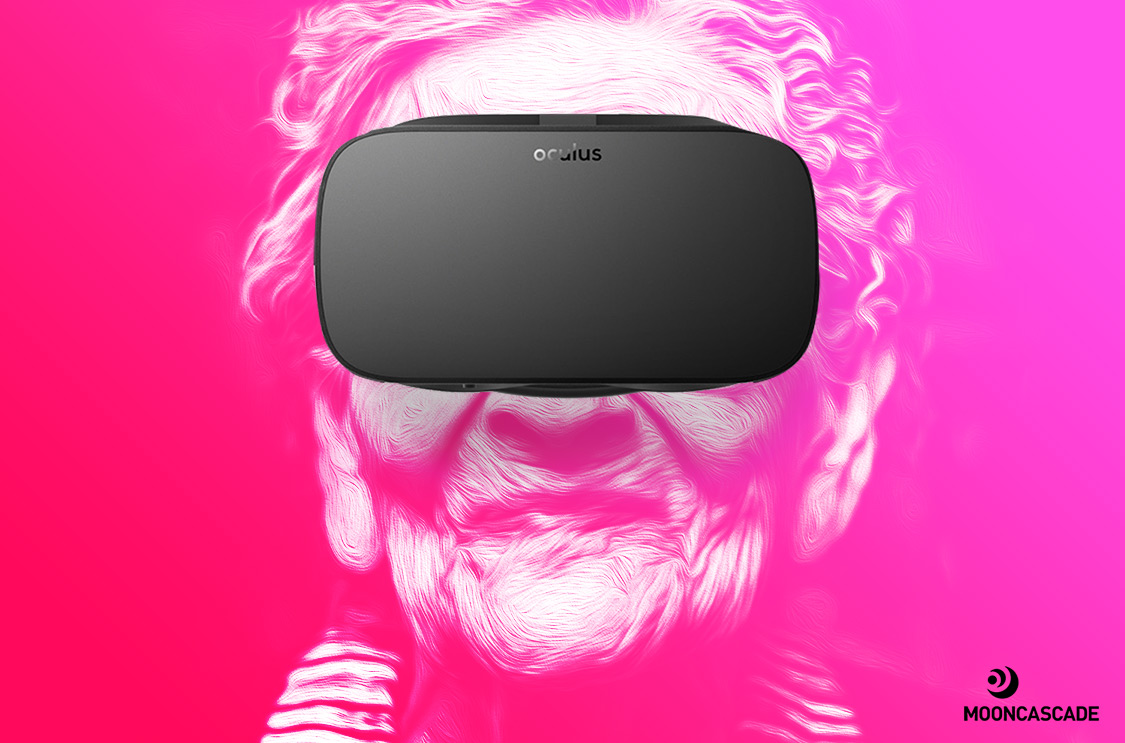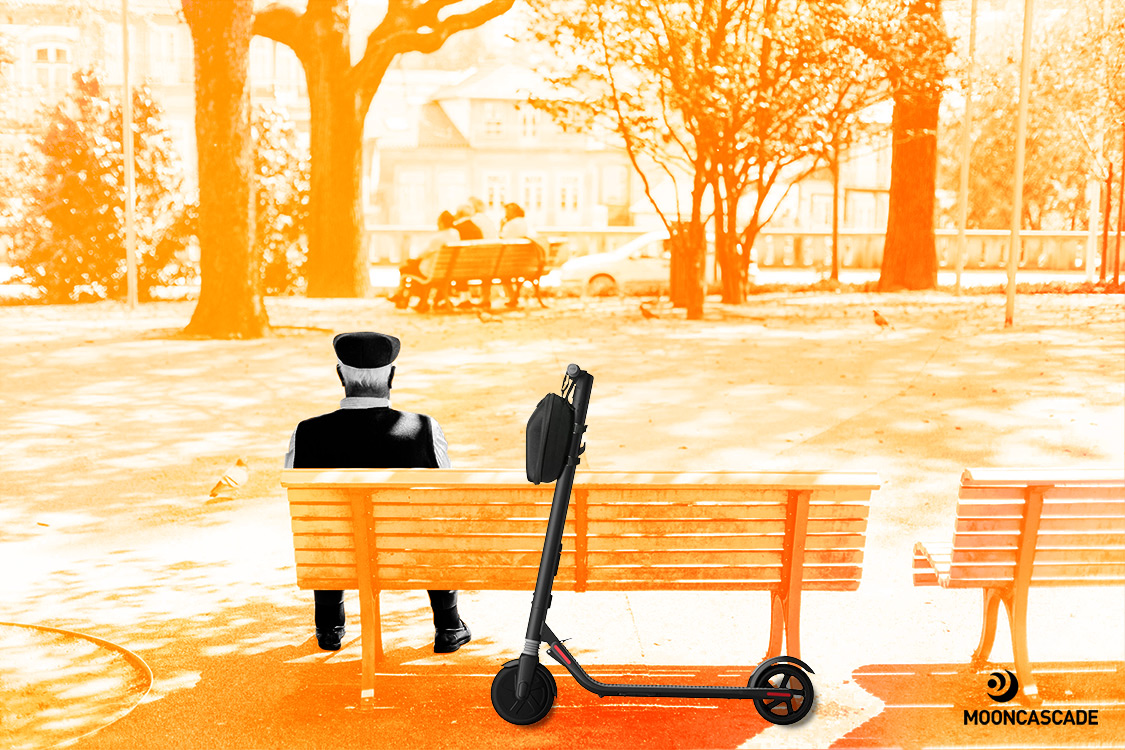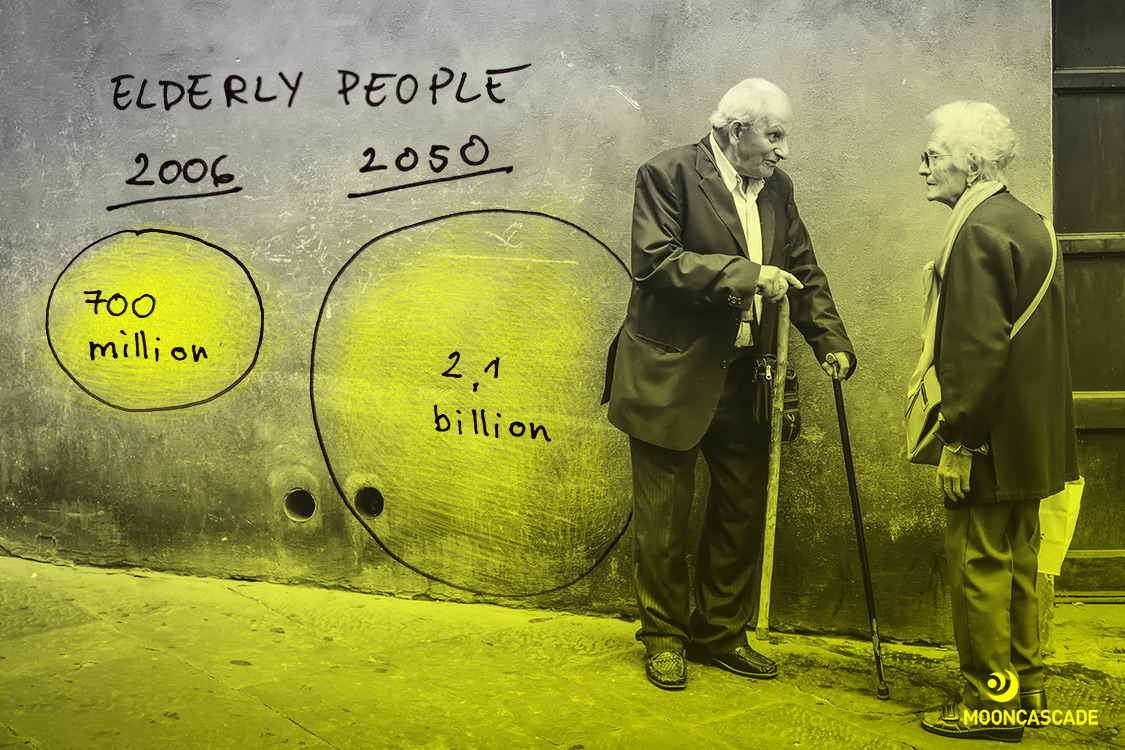Mobility Solutions Focused On The Elderly
The mobility solutions industry is growing fast. Investors have poured over 220 billion dollars into more than 1,100 mobility startups worldwide since 2010. Over half of that amount has been invested in the past three years alone.
For the most part, the future mobility solutions proposed by startups like these are focused on younger target groups in urban areas. This means plenty of ride-hailing apps, of course, but also more shared mobility products, with companies from Uber to Mercedes-Benz trying their hand at e-scooters and e-bikes in cities worldwide. At this year’s Tech Open Air in Berlin, they were everywhere.
Yet as I made my way around the event, I couldn’t help but think of something the mobility industry seemed to be ignoring: the world’s population is ageing in a big way. It’s estimated that there will be 2.1 billion elderly people by 2050, with many living in rural areas. And, contrary to popular belief, this increasingly large group will be just as engaged with technology as its younger counterparts.
A recent study conducted by AARP shows that 90% of adults over 50 in the U.S. own a computer or laptop and 70% own a smartphone. In another study by Senior Care, 81% of elderly American respondents felt that social media would be the most important form of technology as they aged. 36% said it would be ride-sharing apps.
What do all of these numbers add up to? A fast-growing segment of 65 to 85 year olds who actively use technology and need to get around like everybody else—though not exactly in the same way, or in the same places, as their younger counterparts.
If you ask me, there’s big potential in mobility solutions. It’s just a question of designing products tailored to the specific needs of the elderly. Let’s jump right in and have a closer look at what this might mean.
Product design for the elderly

I first started thinking about this question after watching a YouTube video by the TryGuys, who were testing out AGNES, a device used by the MIT AgeLab to simulate what it’s like to be old for people who aren’t.
The AgeLab is an exciting innovation lab focused on researching customer-centric solutions for people who don’t typically get involved in user testing. The main goal of their research is to show that the elderly aren’t incapable of using technology, but that they simply approach it differently than younger generations do.
One of their guiding principles is transcendence design. The idea is to avoid designing “easy to use” products, which is just another way of calling users stupid. Instead, the AgeLab is interested in building a user experience that can impact the elderly by understanding their unique set of needs and expectations. It’s not about emphasizing disability, but being aware of the different ways people use things. Just like a company might do when launching products in a market that speaks a different language or comes from a different cultural background than their own.
This approach has already made its way into the business world, with products like Lively, a digital hearing device, or GrandPad, a tablet specifically designed for older users, recently bringing in large amounts of funding. But has anyone started thinking this way about mobility solutions?
Flipping the script on future mobility
At TOA 2019, I asked around to get a feel for what people were thinking about future mobility solutions for the elderly. Surprisingly, the most common response I got was this: there isn’t much to think about—the issue will solve itself as older people progressively adapt their habits to using new technologies.
But the elderly can’t necessarily ride a bike or scooter. They might not have access to services like Uber where they live. In the 65 to 85 year old demographic, we’re talking about twenty whole years of being able to use products. That’s a huge amount of time to be ignoring a group that will soon make up a significant percentage of the global population.
Instead of waiting for the elderly to adapt to whatever mobility solutions the industry builds, why not start building things that are tailor-made to their needs? Not only would this approach provide a host of new business opportunities, it would also be a great way of thinking sustainably about the world’s changing demographics.
Community accesS

One major issue the elderly are confronted with is limited community access. Older people tend to live in smaller towns or the countryside, which have less infrastructure and larger distances between destinations than cities. This makes getting around harder, more expensive, or simply impossible for people who can’t drive or don’t have access to their own car.
To use a personal example: my grandmother lives in a small town and her main source of income is a government pension. When she’s alone, her only option for getting around is public transportation. This may be affordable, but it isn’t flexible and imposes plenty of limitations on her mobility. She can’t go to the theatre any more, for example, because buses stop running by nighttime.
Not only does limited mobility in rural areas cut down on social opportunities, it also makes accessing basic amenities harder than it should be. Last year, Mooncascade attended the Estonian digital government hackathon, where we read a number of case studies about villages with high numbers of elderly people paying someone to drive them to a grocery store that was only one kilometre away!
While a crowdsourced approach like this one is a good start, there’s certainly room for more efficient, and more personalized mobility solutions here. In southern California, older people are already using Postmates to get things delivered from the pharmacy or Lyft and Uber to get around. However, services like these remain difficult to access or too costly outside of urban areas.
People spend a lot of money thinking about last-mile logistics so that companies like Amazon can deliver anything, to anyone, anywhere. Why not apply this same energy to bringing future mobility solutions to older people in rural areas?
Mobility solutions at home
Another key question for the elderly, no matter where they live, is individual mobility at home. As people age, they inevitably face the gradual slowing or breaking down of their body’s functions.
To combat this, it’s essential for them to stay physically active and regularly work on strength training. Research shows that older people who engage in more physical activity are 77% less likely to develop a major mobility disability than those who stay put as they age.
There are a few products out there to help with this. I’ve come across some smaller Tai-Chi apps to help retired people stay active, and indeed these too can be considered mobility solutions. Some gyms also offer classes for the elderly. But there’s still plenty to build on in terms of quantity and quality.
This is especially true if you take into consideration people who use canes, walkers, or wheelchairs. I’d argue that many of these mobility solutions aren’t great for small apartments because they take up a lot of room, are hard to bring up stairs, and don’t make it easy doing chores in cramped spaces. Hopefully we’ll start seeing new approaches to these types of individual mobility tools in the near future.
Future mobility solutions for the elderly: a compromise between cost and innovation

As businesses start thinking about product development for this target group, it’ll be important to remember that people with lower incomes are most at risk of mobility disability. Smart design will be key, but so will clever business models that can provide affordable mobility solutions to a segment of the population with far less money to spend than younger people in cities.
Though this may seem daunting, remember that the average life expectancy in Europe is 79 years old for men, and 84 years old for women. The challenge of elderly mobility is something we’ll all have to face sooner or later. Instead of ignoring this growing segment of the world’s population, why not do the best we can for it?
ARE YOU IN THE MOBILITY SOLUTIONS BUSINESS YOURSELF?
We can help you to expand your market and increase your user satisfaction by designing and developing accessible and inclusive mobility solutions that fit the needs of all your users. Let’s have a call and see what we can do for you.

